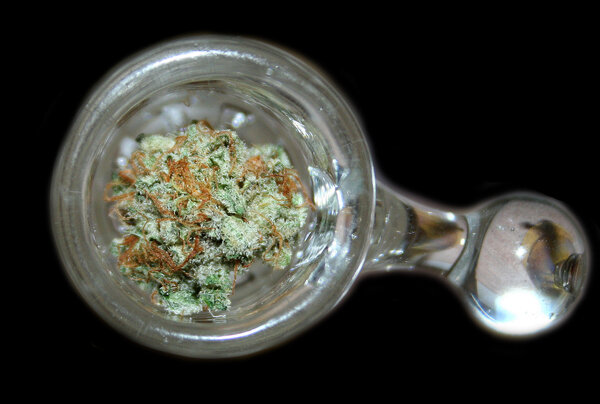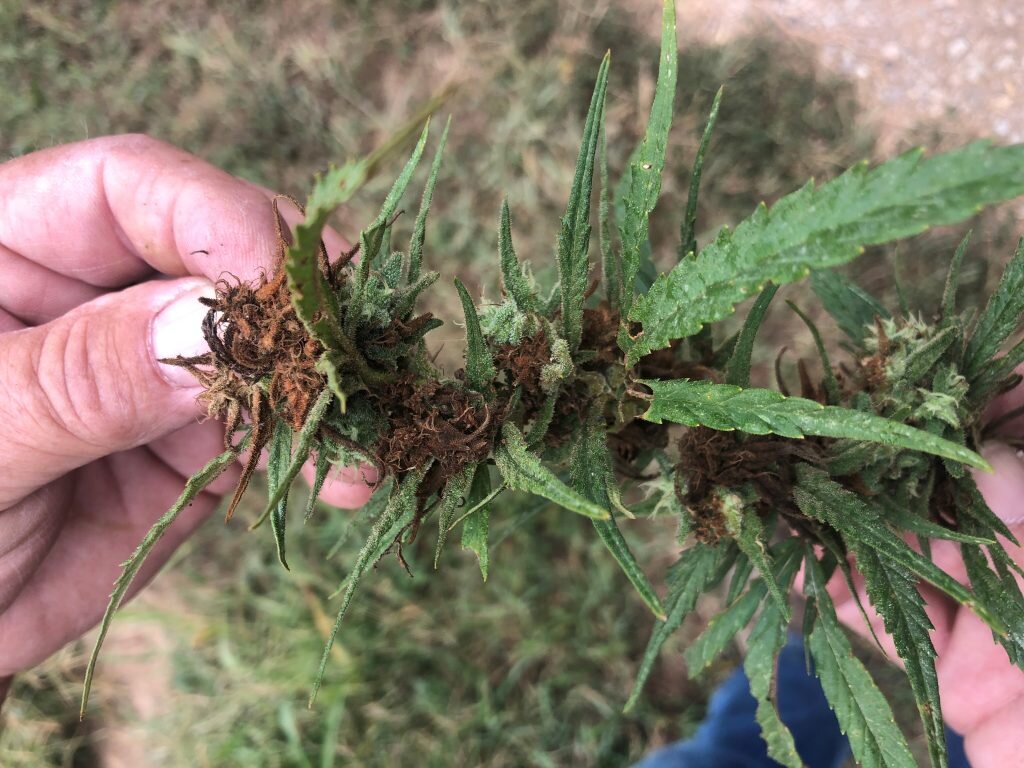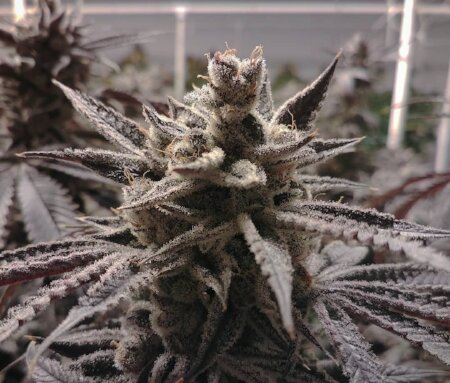
Every once in awhile it seems we need to reiterate one very basic fact about any cannabis worth smoking. It doesn’t matter who grew it, if it is worthy of packing in your bowl or rolling up then that picture-perfect nug that you are breaking up is the result of a lot of care, experience, hard work, patience, and risk, all taken on by the cultivator.

While it may be true that most of you reading this are cool enough to realize that effort and how crucial it is to the quality of the buds in your stash, those who know little or nothing about the culture and history behind the cannabis plant and only see it as a commodity are overlooking this essential part of the equation – it all starts with the seed.
Nowhere is that more clear than right here in California. On the regulatory side, we are seeing this naiveté play out in the form of overbearing state and local requirements, permits, and associated fees along with unjust taxes levied on anyone who does get licensed to legally cultivate cannabis. This incredibly high cost just to enter the legal market has led to an influx of investor capital that cares little for terpenes or bag appeal, but instead only for profits at scale and the bottom line.
The result is dispensary shelves filled, for the most part, with midzotics and glorified boof that, unsurprisingly, most seasoned heads are thumbing their noses at on their way to meet the neighborhood plug.
Industry insiders estimated that as many as 50,000 farmers were cultivating cannabis in the Prop 215 market here in California, serving as many as 12,500 dispensaries stretching up and down the state. Now, under Prop 64, only roughly 5,500 growers are licensed and the state just now nears 600 licensed dispensaries total. In Mendocino County, in the heart of the famed Emerald Triangle, 10,000 growers were reduced to around 650 today, a cut that has taken a toll on the local economy.
Sadly, we predicted this from the jump and our fears came true as soon as the state opened the gates for large-scale license stacking and broke its promise to give the small to midsize legacy operators a 5-year head start over the corporate cannabis carpetbaggers. After all, do you think the state wants to burn X amount of resources policing 50k licenses, or x amount policing 1/10th that many?
These are not half baked conspiracy theories, we are seeing it happen right in front of us. If you think this is merely a ‘cannabis problem’ or a ‘California problem’, you may not have been paying attention to what is happening to the mainstream American farmers who produce our food, our milk, our textiles and so much more. Small farmers across the country are getting left out, bought out, or starved out… sound familiar, Cali?
WAKING UP FROM THE AMERICAN DREAM

Whether you are growing corn or cannabis or raising cattle, there are countless factors and variables that can make or break a farm’s finances, and many of them are out of the farmers’ hands. For example, John Newton, chief economist of the American Farm Bureau Federation, recently told TIME Magazine that 2019 has been “one of the most significant weather event years” delivering extreme rain and snow conditions that prevented U.S. farmers from planting 19 acres of otherwise prime land. By comparison, only 2 million acres were left unplanted due to such conditions last year.
Such years have historically been chalked up to an “act of god” by most farmers and they’d cinch their belts a little tighter and get back to work. In the wake of FDR’s “New Deal” back in the 1930s, a sort of minimum wage was established for American farmers guaranteeing them that as long as they produced goods, they would earn a living. The decades that followed were the fabric of what came to be known as The American Dream – buying land, working the land, starting a family, and passing the legacy and the honest living on to one’s offspring. American prosperity thrived. But in the 1970s the feds stepped back into farming and began to dismantle the protections provided by the New Deal, instead leaving U.S. farmers and ranchers vulnerable to volatile global markets as we are seeing today.
For nearly a half a century now our federal government has clearly come down on the side of Big Agriculture to the detriment of the small farmer. Hell, they weren’t bashful about it then…
“Get big or get out!”
– Earl Butz, Sec. Of Agriculture under Pres. Nixon, in a message to farmers in 1970
…and they still aren’t now!
“In America, the big get bigger and the small go out.”
– Sonny Perdue, Sec. of Agriculture under Pres. Trump, at the World Dairy Expo in Wisconsin in October of this year
That is exactly what we have seen happen. Between 1987 and 2012, the number of farms with 2000 or more acres doubled in this country while those with 200 – 999 acres dropped by nearly half. The U.S. is estimated to haul in roughly $88 billion in farming revenue this year, but the part the Feds don’t want us to know is that 40% of it is money that they pumped into the system in the form of aid and insurance. Farm bankruptcies are at their highest level since 2011. That’s not healthy or organic, and it is certainly not sustainable.
HARVESTING DEPRESSION
By reducing the profit margins for American farmers to what amounts to pennies on the dollar compared to just a decade or two ago, the federal government has encouraged the little guy to just quit… or worse.
Farm Aid is operating a toll-free telephone service now to give distraught farmers who may be contemplating suicide somebody to talk to. They say that calls to the 800 number are up 109% over past years. One dairy farmer in Pennsylvania told TIME that she personally knows of at least nine suicides in just the past two years directly related to low milk prices.
When these small to midsized farms are gobbled up by their corporate competitors, the communities surrounding those farms die off. Instead of profits being split among local families who then reinject that capital back into their local economy, whatever profits remain are whisked away and hoarded elsewhere.
Not to mention the supply chain issues presented when so much production is consolidated. It gives too much power to corporations who know we need what they are exclusively selling and this perverts democracy and any notion of a “free market”.
When goods are produced at large scales, the behemoth corporations making those goods can manipulate values and prices to protect their market share, effectively setting prices so low that nobody but them can survive on the margins. Dairy farmers are being paid roughly half of what they earned per gallon of milk in years past, and the cattle they take to auction are only earning a fraction of what they used to. If you have thousands, or tens of thousands, of cows squirtin’ for you though, you can probably make the whole thing pencil out financially.
This is just what we are seeing happen in state-sanctioned cannabis markets as well, even though they are mostly still in their infancy stages. Overproduction is leading to massive wholesale price drops to the point where, in general, the growers are making less money than any other stop on the taxed/regulated supply chain even though, as we all know, it starts with a seed.
Fortunately, and we write this with ZERO snark or humor, the California Bureau of Cannabis Control hasn’t had to setup a suicide hotline yet.

Hemp farming is another story. As many of the mainstream farmers we’ve been talking about reached the end of their rope in recent years trying to save their livelihoods, some of them turned to the hottest new crop on the block, hemp, since it was made legal to do so by way of the 2018 Farm Bill signed into law last December. Now, with billions of dollars worth of hemp crops rotting in the fields, reports of “hemp farmers” taking their own lives are materializing, but the truth is that their depression was likely more deeply rooted.
The American Farm Bureau Federation states that 91% of farmers have financial problems that negatively affect their mental health. 87% of them are afraid that their current set of problems could cost them their farm. As a result, suicide rate among farmers is now 5x higher than other civilian careers.
SPROUTING HOPE
When you look at the big picture, it is impossible to ignore the similarities between what we see happening across the country with how the Feds protect Big Ag and what we see happening here in the California cannabis market where legacy operators are being shunned (and even punished) in favor of deep-pocketed corporations.

Fortunately, there are still enough educated consumers who actually care about what they are putting into their bodies that organic, sustainable, small-batch craft farming practices are still thriving in the mainstream market. This bodes well for cannabis as well as many connoisseurs envision a submarket for the good stuff, similar to how custies can now choose a Bud Light or a locally brewed IPA.
In 2016, there were more than 14,000 certified organic food farmers here in America, up a whopping 58% from 2011. California cannabis can follow this same model but the barriers to entering the industry must be lowered and the incentive to grow environmentally responsible, high quality, craft cannabis must be higher than it currently is.
As for the rest of the country, we should really be careful what we wish for when we discuss federal cannabis legalization. First of all, they completely dropped the ball when they legalized hemp and somehow forgot that it includes CBD as well. More importantly, we see how they are treating the small farmers who form the fabric of our rural communities, we see how they tilt the table in favor of faceless corporations, and we see how much more priority is put on quantity instead of quality.
When it comes to the federal level, piecemeal reform like the MORE Act, the SAFE Banking Act, and the handful of efforts to help our veterans – all while preserving states’ rights – is the path we prefer.
If you or someone you know may be contemplating suicide, call the National Suicide Prevention Lifeline at 1-800-273-8255 or text HOME to 741741 to reach the Crisis Text Line. In emergencies, call 911, or seek care from a local hospital or mental health provider.
Keep updated on all the latest news and updates in the Cannabis industry here at Beard Bros Pharms by signing for our Friday Sesh Newsletter here. Always Dank and Never Spam!
- Research Shows Seniors and Cannabis Use Is A Growing Trend
- Missouri Hemp Farmers Form Missourians for a Single Market in Attempt to Redefine Regulations
- Could a Choctaw Referendum Bring Recreational Cannabis To Mississippi?
- Lounge Spotlight: The Tribe Berlin
- Traveling The Cannabis Trail #15 – Area 101, Mendocino County
- California Continues Push to Ban Hemp-Derived THC Products













